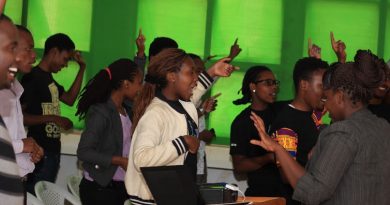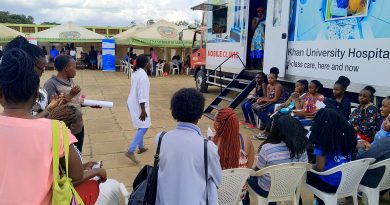How Universities Can fill Disability Gaps
By Brian Murithi
The disabled in Kenya and Africa in general have for long been left out and it’s only in recent times that the winds of change have hit them at least politically. The 2010 Constitution of Kenya has a seat for people with disability with Nominated MP Isaac Mwaura being the most vocal Legislator on issues touching on disability. He sponsored a motion that compelled all public buildings to have ramps and that the National Construction Authority was to oversee the whole process. This brings me to problem number one. Mobility.
Mobility has been a major challenge to people with disability especially public transport and public buildings. Critics of this directive say that reconstruction of buildings is a costly affair and time consuming. Being a university that teaches building technology, JKUAT can seize this opportunity to bring out its best in terms of its skills. Architecture students could use this gap to test prefabricated technology on buildings that don’t have ramps here in school like the Common Lecture Building (CLB) and New Common Lecture Building (NCLB). Prefabricated technology takes less time to build, it is much stronger than ordinary bricks weigh less weight and cost much less as compared to the use of ordinary bricks in construction. The success of this pilot project would then be replicated elsewhere like courtrooms and in National and County Government offices across the country. This has not only the effect of marketing JKUAT to the outside world but also increase the participation of people with disability in nation building since they will move around with ease.
Access to mobility devices is another hurdle people with disability face. This is because the devices are expensive and the available ones are of poor quality. While most people who use wheelchairs dream of having an electric wheelchair, that remains just a dream since they are expensive and are primarily made for the European environment meaning they cannot tackle the Kenyan rough road. The university by way of its electrical engineering students or the technology expo could work out a way of making manual wheelchairs electrical. This would be a great milestone in helping people with disability access electric wheelchairs at a minimal cost while also presenting a chance to electrical engineering students put their skills to practice and discovering new knowledge through experiments. Better still, through its collaboration with Japan International Cooperation Agency (JICA) the university could benefit from transfer of technology since Japan has already made an invention of a gadget that converts manual wheelchairs to electric temporarily. The gadget is in the shape of gigantic Dr. Dre headphones that is attached to the rear wheels of a wheelchair and gives electric power to a wheelchair for a while and can propel a wheelchair to the speed of 20 miles per second. The university can also facilitate the making of solar powered wheelchairs which use solar power to pimp wheelchairs, like attaching headlights.
Information and media technology have been cited as the best industries for job opportunities to people with disabilities. This is because they require less manual effort and have a high return in terms of salaries. In Brazil for instance, CCTV cameras are controlled by deaf police officers who cannot be sent to the field because of communication barrier and so their work is contained only to the CCTV Control Room. This helps the police keep an eye on whatever the lenses are focusing on. The officers are protected from public domain to avoid victimization by would be suspects.
Since the creation of Virtual Deejay software, the music industry has seen the number of Disc Jockeys explode. There are more DJs in Kenya than even the number of doctors in the country. Critics argue that the software has caused the compromising of standards in the entertainment industry but this is good for the music industry because the cut throat competition forces people in the entertainment sector to be creative and innovative so as to stay afloat. This means that those that do not meet the expectations of the audience will close shop to the joy of would be DJs since professional DJ academies will have to lower their prices to accommodate upcoming DJs least the forces of demand and supply will send them packing.
One of the things that affects people with disability negatively is apathy where people have misconceptions about people with disability. Psychologists say that the things we consume in terms of television content have an impact in terms of our thinking. Once one watches a movie, the likelihood of using a line from that movie is inevitable. With this in mind, media students at the university in conjunction with those of programming can design a script writing software where disability stories can be enacted under professional guidance and sold to media houses that have a large viewership. The effect would be a change in the attitudes of people about disability as well as growth in the film sector and the nurturing of talent that is very rife amongst university youths. There can be no better time to actualize these ideas like now due to the fact that there has been mushrooming of TV stations brought about by the digital migration. The TV stations are then compelled to provide 60% of local content by law or ship out.
Best of Luck





Wow!!!! That’s so creative of you Kiwu, God bless you much